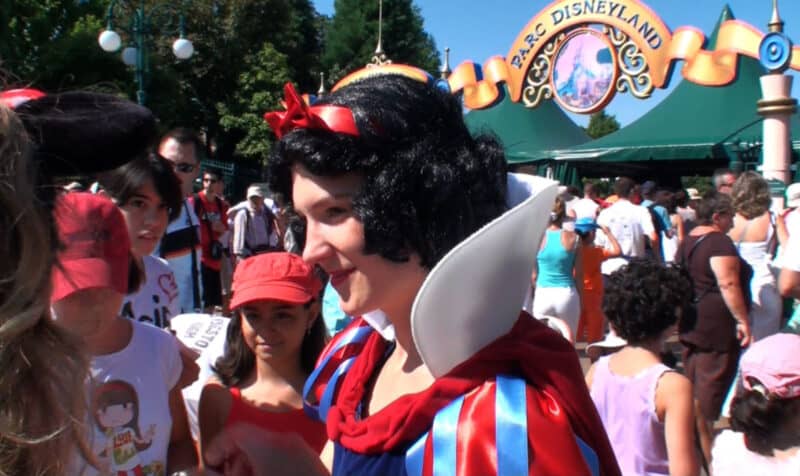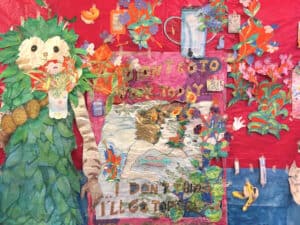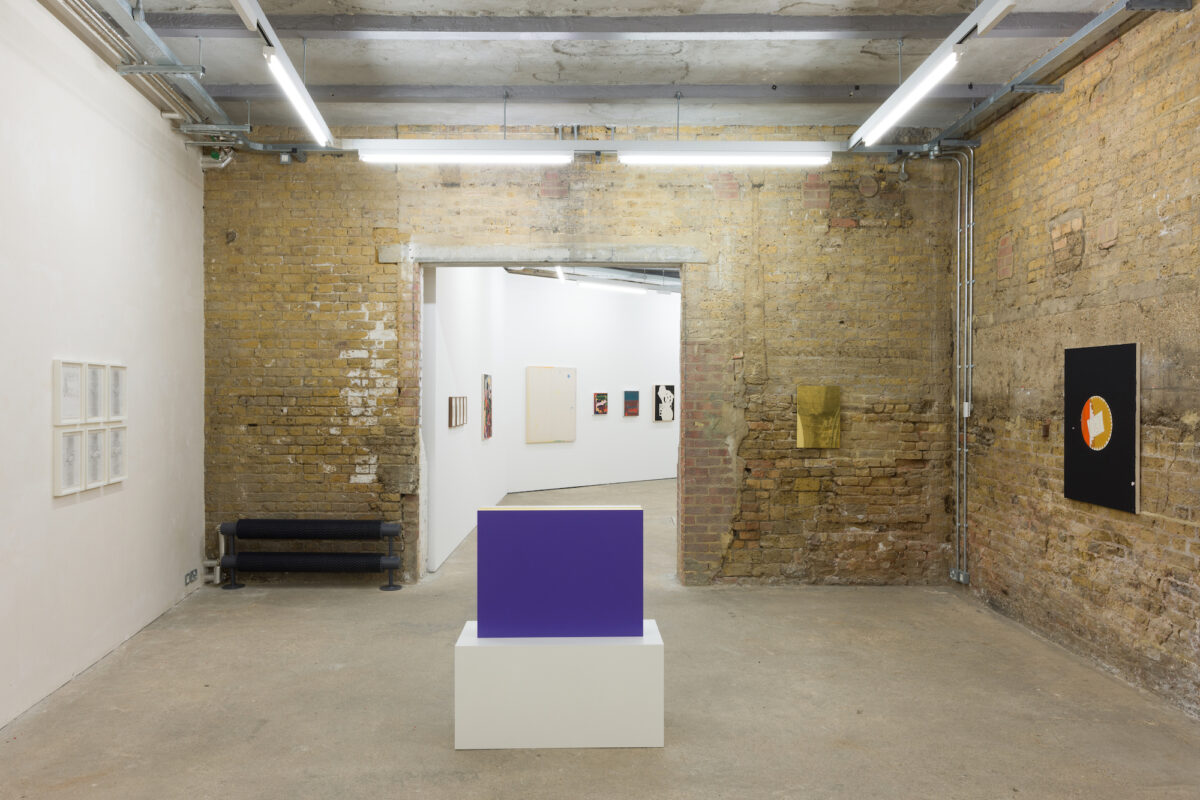
Matt Connors’ first UK institutional exhibition opened on 8th March at the Goldsmiths Centre for Contemporary Art. The title of the exhibition, ‘Finding Aid’, refers to the document used to decode the organisation of an archive. Or, more accurately, it is a meta-document – a codification system used to decode a larger codification system. This language of translations, mirrors and codes pervade the exhibition. Originally intended as a solo retrospective, the show gradually expanded to include works by twenty-one other artists and designers who had informed Connors’ practice throughout his career. Matt Connors’ own work sits within a complex archive of references, connected to one another through formal echoes. Moments of visual connection spark off between the different works within this exhibition, which can be seen, like his paintings themselves, as a visualisation of relationality.
In the same way, each of Connors’ painting stands as relational network in and of itself. Through the choice of colours, the quality of a line, or the application of oil paint onto canvas, we notice references to the key art historical figures who inform his practice. Connors uses a stain-painting technique in many of his canvases, in a nod to Helen Frankenthaler and Morris Louis, whereby the paint seems to exist within, rather than on, the canvas. The flat fields of colour create a sense of airy lightness which Connors offsets with bright, robust colours and decisive compositions – shades of Sol Lewitt. Some compositions, with flat colour planes vertically bisecting the canvas, conjure Barnett Newman, whilst other bullseye-like compositions evoke Kenneth Noland.
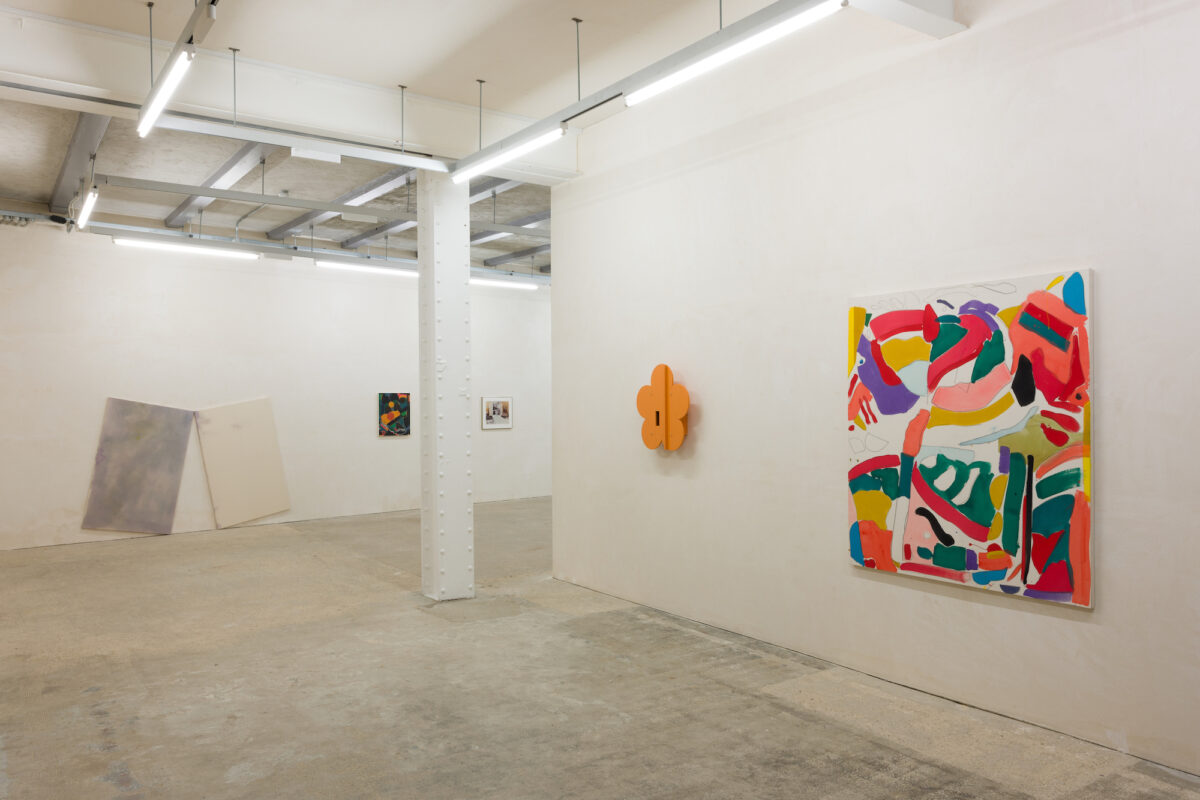
Ultimately, however, Connors owes the most to artists like Alfred Jenson and Bernard Piffaretti, whose practices explore the visual harmonies of mathematical principles, calendars, or processes of repetition. Connors constantly imposes rules on his paintings and then contravenes them. His two huge canvases Mural for a Gay Household I & II (2018 – 2020) utilise a Modrian-esque checkerboard composition, the structure maximised by the painting’s giant scale. Yet Connors strays from his own system, smudging the flat edges of his squares and planting an irregular black mass in the centre of the grid. This unresolvedness is the black hole at the centre of his practice. He sets up signifying parameters without ever resolving the sign. Viewers may find this ambiguity alternately motivating or maddening as they move through the exhibition, grasping for answers.
Even Connors’ most gestural works abide by a structural logic. 2015’s JaJanus, a loose, calligraphic mass of overlapping gel-like colour, is in fact bound by strict compositional rules. Each stroke of colour is bisected in half by another, while a line splits the frame exactly two thirds of the way down the canvas. Intersections are exact. The golden ratio swims in front of my eyes.
The grid, drawn in pencil upon the canvas, has been used by painters since before the Renaissance to accurately render the scale of an observational drawing. For Connors, however, the grid stands both as a tool and a metaphor, reflecting his interest in translations of scale. It appears again and again throughout the exhibition, nestled behind Connors’ own work and echoed in the work of others, including Siobhan Liddel, Guy de Cointet, and Deondre Davis. Like a finding aid, a grid is for navigating, locating oneself in space in relation to other objects, for scaffolding creative expression, for imposing order on chaos.
Like the grid, the concept of the frame also seems to interest Connors – most of his canvases have painted, drawn or unpainted square borders, whilst his sculptural piece Folkways (2012) consists of two empty artist’s frames, in orange and green, leant against a wall. This insistence on the frame literalises the non-referential nature of the paintings, presenting them as documents rather than windows into a world. Bob Law’s 1969 work, Nothing to be afraid of I 16.7.69 adds an interesting flourish to this conversation – a blank canvas containing nothing but an irregular black border and the date in the bottom corner. It neatly emphasises the representational tension inherent in the act of making a painting, whereby the lack-of-subject itself becomes the subject simply by virtue of being framed. In the same way, Connors’ painting Echo Implies Room (Orange/Unprimed) (2012), an almost empty canvas containing nothing but a drawn-on border and some flecks of discarded colour, emphasises the almost melancholic significance of the missing signifier.
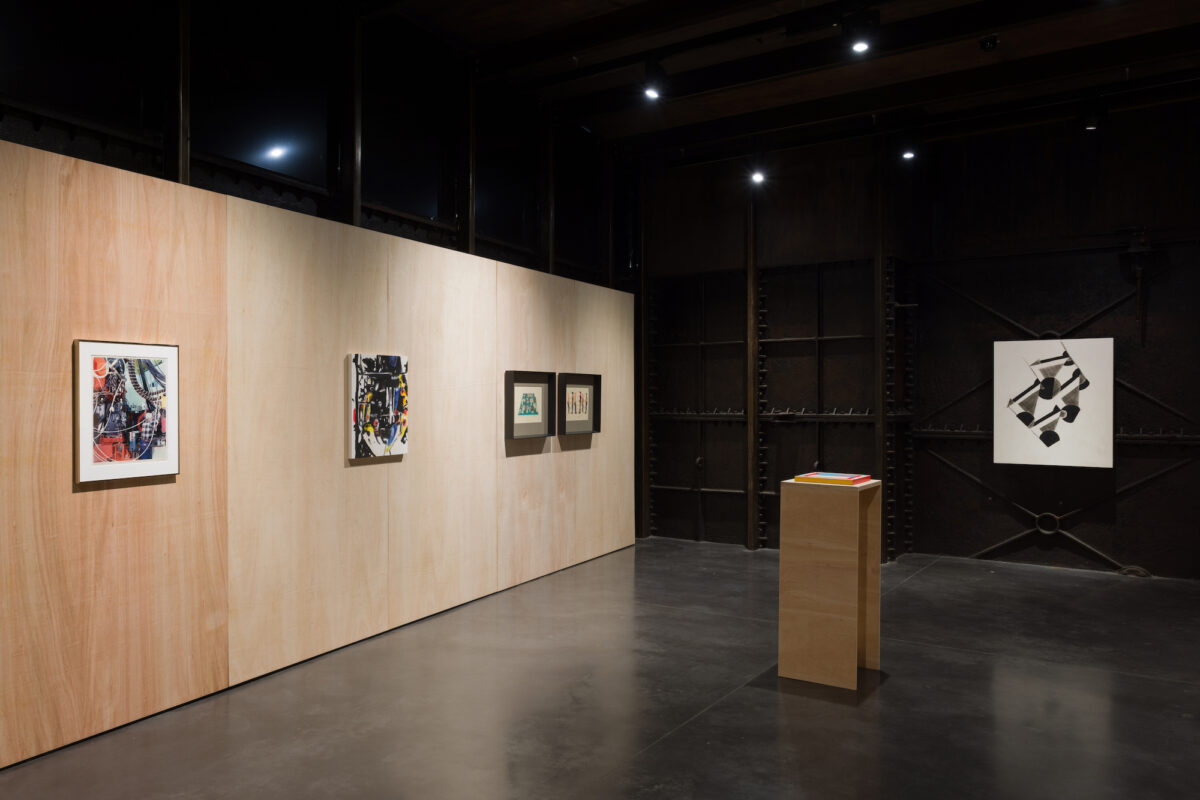
This sense of grasping, chasing – but never quite catching – meaning as it slips through these stages of translation is most clearly experienced in his painting Harlequin Set (III) (2023). Black paint is applied gently to a white canvas, lifted by minimal splashes of yellow, orange, and blue. Unlike Connor’s other paintings, the dappled brushwork here hints at light, shade, depth and form, rendering something almost recognisable. Indeed, the painting was originally conceived as purely observational, drawing from a photograph of a kite stuck upside-down in a tree. By creating multiple copies of the image, Connors erased the original, real-world referent. The process of signification is scrambled through repetition. Yet the ghostly echoes of the original subject remain, hinted at in the purposeful brushwork. In this way, the painting is a palimpsest of the original image. This idea is echoed in Mark Armijo McKnight’s Palimpsest (2015), hanging nearby. This black and white photograph depicts a bare brick wall dotted by the tack-marks from a sign or poster which has recently been removed. The subject here, as in Connors’ work, is the ghost of what has come before.

Leaving the room, the viewers might note the hanging kite in the tree conjured by another artist – Suzanne Jackson’s colourful hanging sculpture, Tilt-Color Smash (2022). Whilst meaning might be deferred or hidden in this exhibition, it is never far away.
Connor’s works are visually arresting, masterfully hypnotic in their compositional tensions. Nevertheless, the exhibition functions first and foremost as a puzzle, a cerebral network connected by processes. A photograph by Robert Cummings showing a scientist in a laboratory drawing a grid on a man’s shaven head, presumably to measure his brain, sticks in my mind as an on-the-nose metaphor for Matt Connors’ own way of thinking. I do not linger long at any painting, instead searching for the next visual clue elsewhere in the room. I leave the exhibition feeling mentally exhausted but satisfied.
MATT CONNORS, Finding Aid, 8th March- 2nd June 2024, GOLDSMITHS CCA


